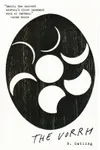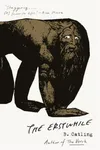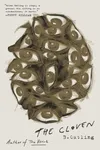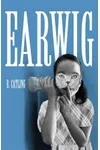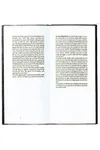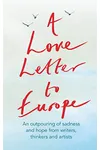Picture a British artist who weaves surreal forests and cyclopean myths into unforgettable tales—meet Brian Catling! Born in London in 1948, this sculptor, poet, and novelist dazzled the world with his genre-defying Vorrh trilogy, blending fantasy, surrealism, and gothic horror. A former Professor of Fine Art at Oxford, Catling’s multidisciplinary genius invites readers into worlds where imagination knows no bounds.
With a career spanning performance art, poetry, and fiction, Catling’s work is a kaleidoscope of the bizarre and beautiful. His playful yet haunting style has earned praise from literary giants like Alan Moore, making him a hidden gem in contemporary literature. Ready to explore the mind of this creative maverick? Let’s dive in!
The Making of Brian Catling
Brian Catling was born in post-war London, adopted by working-class parents who nurtured his creativity despite his struggles with dyslexia and a stutter. Growing up among the rubble of bomb sites, he found inspiration in the chaos, staging puppet shows for neighborhood kids. After studying at North East London Polytechnic and the Royal College of Art, Catling emerged as a sculptor and performance artist, exhibiting globally since the 1970s. His early works, like the provocative Antix (2006), showcased his love for the ‘wrongness of actions,’ setting the stage for his literary leap.
Brian Catling’s Unforgettable Stories
Catling’s literary breakthrough came with The Vorrh (2012), the first of a trilogy that reimagines a sentient African forest inspired by Raymond Roussel’s Impressions of Africa. This epic fantasy follows hunter Tsungali and a Cyclops named Ishmael, weaving historical and mythical threads with kaleidoscopic prose. Praised by Alan Moore as a ‘phosphorescent masterpiece,’ it’s a heady mix of surrealism and adventure.
The trilogy continues with The Erstwhile (2017), exploring biblical typologies and William Blake’s influence, and The Cloven (2018), which tackles the Tree of Knowledge. Beyond the trilogy, Earwig (2019) and Hollow (2021) showcase Catling’s knack for dark, architectural narratives, with Hollow evoking Boschian imagery. His poetic works, like A Court of Miracles (2009), reveal a lyrical side, while his Cyclops motif—seen in paintings and performances—threads through his oeuvre, symbolizing singular vision.
Catling’s style is dense yet vivid, blending gothic horror, fantasy, and surrealism. His worlds are alive, often sentient, and his characters—human, mythical, or monstrous—grapple with identity and abnormality. Dyslexia shaped his fluid, image-driven prose, making each sentence a visual feast.
Why Brian Catling Matters
Brian Catling’s impact lies in his fearless boundary-pushing. As a performance artist, he challenged audiences with works like Mr Rapehead (2010), using shock to provoke thought. As a novelist, he carved a niche in speculative fiction, inspiring writers to blend genres with abandon. His Vorrh trilogy redefined epic fantasy, earning a cult following and critical acclaim. At Oxford’s Ruskin School, he mentored artists, leaving a legacy of creative courage.
Catling’s work resonates with those drawn to the strange and sublime. His exploration of disability, identity, and the grotesque offers a fresh lens on humanity, making him a voice for the unconventional. Though he passed in 2022, his stories continue to enchant and unsettle.
About Brian Catling
- Born: October 23, 1948, London, UK
- Key Works: The Vorrh (2012), The Erstwhile (2017), The Cloven (2018), Hollow (2021)
- Awards: Cholmondeley Award for Poetry (2015)
- Notable Role: Professor of Fine Art, Ruskin School, Oxford

Snag The Vorrh and dive into Brian Catling’s surreal, fantastical world! Trust us, your bookshelf will thank you for this wild ride.
